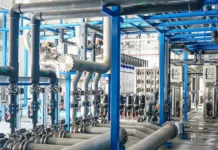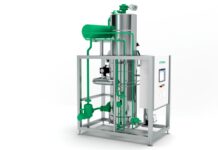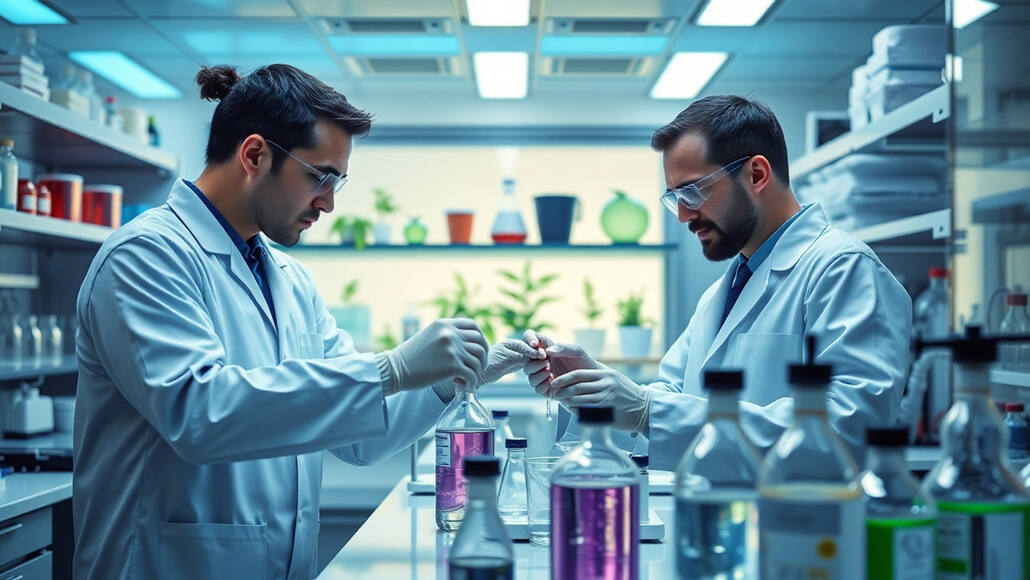The biopharmaceutical sector, although being a pioneer when it comes to advancing healthcare, is also growing under scrutiny in terms of its environmental footprint.
Fluid handling in biopharma, which happen to be the epicentre when it comes to biomanufacturing processes, happen to represent a prominent portion in terms of resource consumption as well as waste generation within the biopharma facilities. As the stakeholders along with regulatory agencies push for sustainability, understanding as well as mitigating environmental effects when it comes to fluid handling has gone on to become a crucial priority.
Let us now explore the numerous environmental barriers that are linked to fluid systems within biopharma, discover material usage, waste generation, and energy consumption, as well as the potential when it comes to green innovations that can lead the sector towards a sustainable future.
What are the environmental challenges when it comes to fluid handling systems?
Material consumption along with waste
Flute handling when it comes to biopharmaceuticals depends heavily on disposable components like single-use bags, connectors, tubing, and filters. These components are typically made out of plastics as well as polymers and are designed in order to prevent cross-contamination as well as simplify cleaning validation. But the widespread adoption of single-use technologies (SUT) has gone on to introduce a rising challenge – a significant plastic waste generation.
Apparently, each batch is processed by way of using single-use assembly and contributes to the accumulation of non-biodegradable waste, which often requires specialized disposal methods. Incineration or the landfill disposal of such material has gone on to raise a lot of concerns when it comes to environmental pollution along with resource depletion. Besides this, the sourcing along with the manufacturing of these plastics involves the consumption of fossil fuels, thereby adding to the carbon footprint of the sector.
Energy usage within the fluid systems
Fluid transfer along with processing happens to involve mixers, pumps, temperature control units, and filtration systems, which consume significant amounts of energy. The energy that is needed in order to maintain sterile conditions and ensure a proper flow along with controlling the temperature can be substantial, especially when it comes to large-scale operations.
It is well to be noted that legacy systems often function without any kind of energy efficiency considerations, thereby leading to excessive electrical consumption. This not only increases the operational costs but at the same time also contributes indirectly to greenhouse gas emissions, depending upon the source of energy. Energy efficiency, hence, becomes a focal point in terms of environmental optimization.
Water usage along with contamination risks
The fact is that water plays a very crucial role in biomanufacturing, not just because it happens to be a solvent or reagent but also due to cleaning and sterilization processes that are associated with fluid handling in biopharma.
High-purity water systems like WFI – water for injection—are indeed energy intensive to produce and also require rigorous quality control. Besides this, improper management when it comes to fluid handling waste streams also risks contamination of wastewater along with residual biological materials or chemicals. Making sure that fluid system discharges happen to meet environmental regulations demands careful system design as well as process controls.
Strategies when it comes to reducing the environmental effect
Shifting from single use to sustainable alternative alternatives
While the single-use components go on to offer operational advantages, their environmental trade-offs prompt the discoveries in terms of choices. Efforts include coming up with recyclable or biodegradable materials in terms of fluid path components and elevating recycling infrastructure within the manufacturing plants.
Designing the single-use assemblies with sustainability in mind, like minimizing material volumes, and compromising on integrity also decreases waste generation. Partnership between manufacturers, material scientists, and also regulatory bodies is the key when it comes to these innovations.
Elevating the energy efficiency within fluid systems
Optimizing pump selection by way of using variable frequency drives (VFDs) and also executing intelligent process controls can prominently decrease the energy consumption. Modular system designs that enable targeted operation and shut down the not-so-required components further enhance the energy savings.
The integration in terms of smart sensors offers real-time data when it comes to system performance, thereby helping with predictive maintenance and also decreasing the unnecessary expenditure on energy. Incorporating renewable energy sources within manufacturing plants gives long-term solutions in terms of decreasing the carbon footprint.
Wastewater management along with water conservation
Fluid system designs that lessen the cleaning frequency and volume contribute straightaway to water conservation. Technologies like clean-in-place (CIP) systems that are optimized to reduce water usage are getting increasingly adopted.
Advanced filtration as well as treatment systems Make sure that effluents go on to meet the strict environmental discharge standards. Closed-loop water systems, along with water recycling initiatives, also reduce the total water consumption as well as environmental release when it comes to contaminants in particular.
Innovations that are driving sustainable fluid handling in biopharma
Biodegradable, along with recyclable fluid path materials
It is well to be noted that the research is progressing into fresh polymer blends along with bio-based materials that happen to retain performance traits and, at the same time, offer decreased environmental impact. The early pilot projects go on to demonstrate that such kinds of materials can withstand any type of sterility and mechanical demand when it comes to biopharma fluid handling.
It is well to be noted that establishing protocols when it comes to the safe recycling of fluid components happens to be an emerging area, which addresses the challenges pertaining to contamination along with material degradation.
Smart process control along with digitalization
The digital transformation when it comes to biomanufacturing helps precise control in terms of fluid handling parameters, thereby minimizing the energy usage and waste. Smart monitoring systems go on to optimize the flow rates, alter processes dynamically, and also detect leaks in order to reduce any kind of excess consumption. Artificial intelligence-driven predictive analytics foresee the maintenance requirements and also process inefficiencies, thereby contributing towards objectives of environmental sustainability.
Circular economy approaches
There are some manufacturers who are already exploring circular economy models wherein single-use components get collected, decontaminated, and either used or recycled to form new products. This kind of closed-loop approach decreases dependence on virgin materials, as well as limits waste too.
Collaboration between biopharma companies as well as waste management firms is very critical in order to establish the required logistics along with safety benchmarks for such kinds of programs.
Regulatory as well as industry trends
Environmental sustainability is increasingly getting embedded within regulatory anticipations. Agencies go on to encourage the manufacturers to offer environmental effect assessments, which are a part of process validation as well as facility licensing. There are industry groups along with consortiums that are also developing sustainability yardsticks and best practices when it comes to fluid handling systems. Compliance along with these standards, which are evolving, not just mitigates the environmental risks but, at the same time, elevates market positioning and, of course, the corporate reputation.
Conclusion
Environmental effect when it comes to flute handling within biopharma happens to be a multifaceted challenge, which demands an overall strategic encompassing material, innovation, advanced process, control, and energy and water efficiency. While the single-use technologies have already revolutionized bioprocessing, their environmental footprint cannot be set aside.
By way of embracing sustainability principles and adopting the emerging green technologies, in addition to fostering a collaborative industry, the biopharma manufacturers can decrease their ecological footprint and not compromise on the quality of the product or the patient safety. The journey when it comes to greener fluid handling systems happens to be an integral part of the future of biomanufacturing, which syncs with life-saving innovation along with environmental stewardship.




















